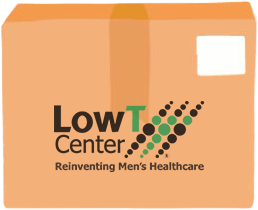Testosterone Replacement Shots vs Testosterone Pellets
If you are diagnosed with low testosterone, you may benefit from hormone replacement therapy. At Low T Center, injection therapy is our medical team’s preferred method for replacing testosterone versus pellets, gels/creams (also referred to as topicals) or patches. There are advantages and disadvantages associated with each of these treatment methods discussed below.
Advantages and Disadvantages of Gels and Patches
The advantage of gels, creams and patches is that they are easy to apply and are convenient. The disadvantage of gels is that they can be messy to apply, and they may also be inadvertently transferred by physical contact to your spouse, significant other, children or others. Absorption rates vary per the individual, even depending on the season and rate of sweat. Patches may cause a rash at the point of application and can sometimes not adhere well to your skin, especially in the presence of body hair. Dosing and adjusting dosage up or down precisely are also very difficult with all methods except injection.
This leaves pellets as another possibility and the more common choice of hormone treatment when compared to topicals like gels, creams and patches.
Testosterone Shots vs Pellets
The advantage of pellets as a treatment method is that the patient only needs to go into a medical office for the procedure 4 times per year as the pellets generally last 90 days before being completely absorbed by the body and needing to be replaced. When low testosterone is provided by pellets, a small incision is made typically in the hip, and a number of pellets are placed under the skin normally under local anesthetic. One danger of pellets is, like any surgical procedure, the insertion site could become infected, and/or the pellets could be rejected. Even if there are no problems with the site, each person absorbs the pellets at a different rate and if symptoms aren’t resolved, or side effects occur, the ability of the medical team to make an adjustment in dosage is generally mitigated until the next round of pellets are inserted. The patient must generally wait until the pellets have been completely absorbed before the medical team can attempt a higher or lower dose, which again can be up to three months away.
Contrarily, low t shots are quick and relatively painless. They do not carry the same risk of site infection as pellets, and the medical team has the ability to adjust dosage every 7 days to resolve symptoms and side effects.
Why Choose Injections Over Pellets?
For these reasons, at Low T Center, the medical team believes that testosterone replacement therapy injections are the superior way to provide you with bioidentical hormones. These hormone injections work the same way that your body’s naturally produced testosterone would. Injections have been proven to be clinically effective, offering us the most control over your dosage along with the opportunity to monitor how they are affecting you. Each time you come in for an injection, we can also address any issues or concerns you may have.

